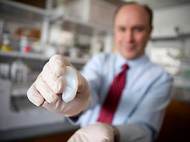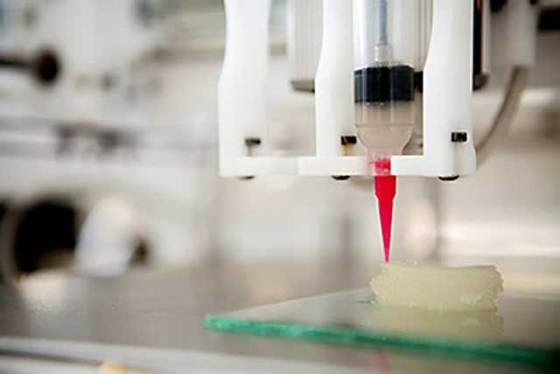Artificial ear creation with 3D printing and injectable molds
 Cornell bioengineers and physicians have used 3D printing and injectable gels made of living cells to create an artificial ear that looks and acts as a natural human ear. The method could be very useful for reconstructive surgery, and the particular case where an ear is created could give new hope to thousands of children born with a congenital deformity called microtia.
Cornell bioengineers and physicians have used 3D printing and injectable gels made of living cells to create an artificial ear that looks and acts as a natural human ear. The method could be very useful for reconstructive surgery, and the particular case where an ear is created could give new hope to thousands of children born with a congenital deformity called microtia.
Up until now, replacement ears are either constructed with materials that have a Styrofoam-like consistency or constructed from patient’s harvested rib. Aside the facts that the latter procedure is complex and usually painful for children, artificial ears constructed by this method rarely look completely natural or perform well.
The researchers started by digitizing a 3D image of a human ear. The data was converted into a digitized “solid” ear which was used to create a mold. The mold was created with a 3D printer. Researchers injected the mold with high-density gel which consists out of collagen derived from rat tails, and then added 250 million cartilage cells from the ears of cows.
“It takes half a day to design the mold, a day or so to print it, 30 minutes to inject the gel, and we can remove the ear 15 minutes later. We trim the ear and then let it culture for several days in nourishing cell culture media before it is implanted”, said Lawrence Bonassar, associate professor of Biomedical Engineering and co-lead author of the study.
He added that the best time to implant a bioengineered ear on a child would be when they are about 5 or 6 years old, because their ears at that time are at about 80 percent of their adult size.
The collagen served as a scaffold upon which cartilage could grow. Over a three-month period, these flexible ears grew cartilage to replace the collagen that was used to mold them. Tests reveled that these patient-specific tissue-engineered ears have high fidelity and largely mimic the natural counterpart in both biomechanical and histological manner, even after an extended period of implantation.
“A bioengineered ear replacement like this would also help individuals who have lost part or all of their external ear in an accident or from cancer”, said Dr. Jason Spector, director of the Laboratory for Bioregenerative Medicine and Surgery and associate professor of plastic surgery at Weill Cornell who co-led the study.
The researchers specifically work on replacements for joints, trachea, spine, and nose because they are primarily made of cartilage – and cartilage doesn’t need to be vascularized with a blood supply in order to survive. While there are promising developments that may lead to printed vascular systems, zebrafish research revealed that they are able to regenerate their organs as well as the needed vascular system to keep them functioning.
While researchers stated all efforts were made to minimize suffering of bovines, ethics lead the Cornell researchers to look for ways to expand populations of human ear cartilage cells in the laboratory. That way, these cells could be used in the mold instead of cow cartilage.
This strategy has a great potential for durable patient-specific tissue-engineered anatomically proper auricular reconstructions in the future. Spector stated that if all future safety and efficacy tests work out, it might be possible to try the first human implant of a Cornell bioengineered ear in as little as three years.
For more information, you can read the article published in the PLOS One: “High-Fidelity Tissue Engineering of Patient-Specific Auricles for Reconstruction of Pediatric Microtia and Other Auricular Deformities”.










Leave your response!